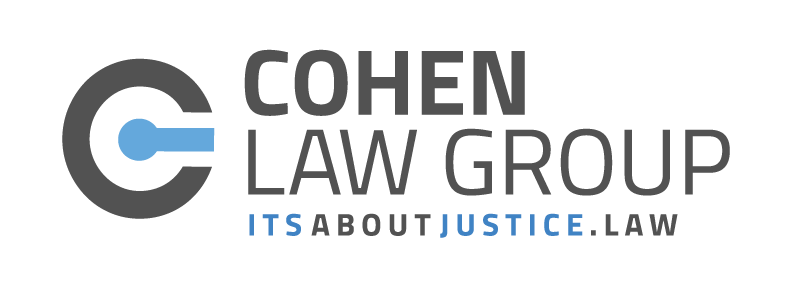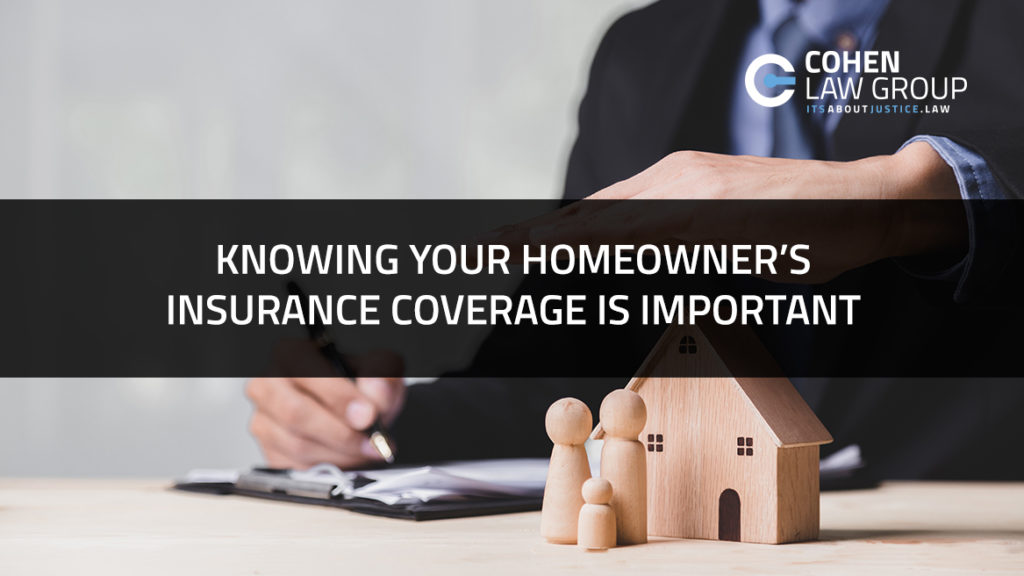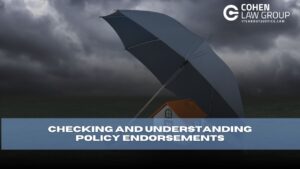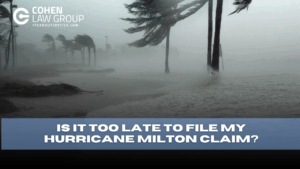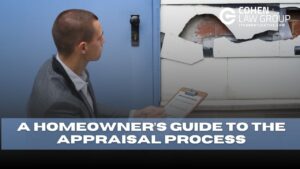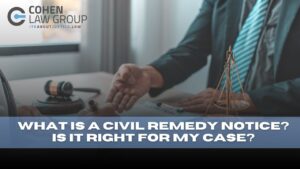If you’re a homeowner, you most likely have insurance coverage to protect your property. The Federal Alliance for Safe Homes, Inc. (FLASH) provides a great information resource that “promotes safety and the financial security of being properly insured.” The guide points out the many responsibilities that come with homeownership, the most important of which is protecting the financial investment you’ve made in your home.
Finding answers to the following important questions will help in determining whether you have the appropriate coverage to fit your needs:
- What coverage is appropriate for my living arrangements?
- Who sells these coverages?
- What coverages do I need to purchase? Are they available?
- What perils are covered in the policy I purchase?
- What is the proper amount of insurance to purchase?
- Are there steps I can take to lower my premium?
Sources and Types of Homeowners Insurance: Know the Basics
Several lines of insurance are available to cover various perils. The most appropriate insurance product for your needs depends mainly on what type of home you live in.
- Owning a Home: If you own a home there are two types of policy forms available: homeowners form and dwelling forms. The main difference between these is that the homeowners form combines property coverage with liability coverage which is the more desired policy for a home that you personally live in. The dwelling form only covers property losses and is typically used to insure properties where the insured person owns the property but doesn’t live in, or only lives in part of the year.
- Owning a Manufactured Home: There are policy forms specifically designed to insure manufactured homes. This type of policy typically covers both the dwelling and contents and provides liability protection.
- Owning a Condominium : There are policy forms specifically designed to cover condominiums, which typically cover contents (i.e. your personal property) and liability. A small amount of dwelling coverage is provided to cover the portions that you are responsible for, as defined by the governing rules of the condominium association. This may include condominium common areas, and you can purchase additional dwelling coverage if the protection included in the package is insufficient.
- Renting a Residence – There are renter’s insurance policy forms specifically designed for you if you are renting and do not own your residence. These forms provide coverage for your contents and liability.
- Owning a Home on a Farm – Farm owner’s policy forms are specifically designed to cover farms or ranches which may not qualify for standard homeowners insurance. This policy may be the most appropriate form to cover property losses to your home, and other structures such as barns and silos, from the damage of tornadoes, hail, and other perils. Farm owner’s policies also cover both the personal and commercial exposure of farms, along with liability coverage.
Insurance Coverage: Know Your Choices
What is a Covered Property? Generally, covered properties are divided into four categories. The definitions of the property and the extent of coverage vary by state, company, and product so it is important to understand the definitions.
Insurance companies define four coverage categories for your home, and they are:
- Dwelling – The structure of the house is considered a covered property and is referred to in the policy as the “dwelling.”
- Other Structures – Other structures that are separate from the house or linked by a fence, wire, or other forms of connection, are referred to in the policy as “other structures.” Examples include tool sheds or detached garages.
- Personal Property – Your belongings and the contents of your home are referred to in the policy as “personal property”. Personal property includes, but is not limited to, appliances, clothing, electronics, and furniture. As not all personal property is covered or may have coverage limits, some items will be covered under different forms of insurance. Some examples of these items include, but are not limited to, money, jewelry, and firearms.
- Loss of Use – When a loss occurs due to a covered peril and a dwelling becomes uninhabitable, the cost of additional living expenses are covered and defined as “Loss of Use”. Loss of Use coverage reimburses additional living expenses, up to a stated limit, that the insured incurs to maintain a normal standard of living after a covered loss
How Much Insurance Is Enough?
Depending on the type of policy, the different dwelling coverage options could be: replacement cost coverage, actual cash value, special payment, functional replacement cost or market value coverage, or stated value.
The settlement of a loss will vary depending on the coverage you select at the time of purchase of your policy.
- Replacement Cost Coverage – Replacement cost is not the market value of your home, nor is it the tax-assessed value. It is the current cost to replace the damaged property, with no reduction for depreciation of the damaged property.
- Actual Cash Value – Actual cash value is the cost to replace the damaged property reduced by an allowance for depreciation.
- Special Payment – Loss is paid before dwelling is repaired, rebuilt, or replaced.
- Functional Replacement Cost or Market Value Coverage – Functional replacement cost or market value (also known as repair cost) is the cost to repair or replace the damaged property with equivalent construction for similar use, without deduction for depreciation. An example of functional replacement would be to replace a plaster wall with drywall. If it is a total loss and repairs are not made the payment amount will be the market value of the home.
- Stated Value – If stated value coverage is selected, the maximum amount paid at the time of loss is the value of the policy, even if the loss amount is larger than the value of the policy. In other words, a selected value is established by the insured, and this value is the limit of liability
Additional and Optional Coverages
Additional coverages may be included in your policy. One example includes building code upgrade coverage which provides 10% coverage for upgrades required by the community to meet building codes when a home is being repaired or rebuilt as a result of a covered loss. Optional coverage for perils, such as earthquake insurance, may be available to purchase separately and can often supplement a homeowners policy.
Ways You May Be Able To Affect Your Premium: Adjust the Deductible
A deductible is the amount of loss paid by the policyholder before any loss is paid by the insurer. The larger your deductible is, the lower your premium will be – however, it is critical to note that a larger deductible also means more out-of–pocket payment by you when a loss occurs. A policy may have different types and amounts of deductibles based on the peril. Many insurers offer homeowners insurance policies with percentage deductibles for windstorm damage instead of the traditional dollar value deductibles used for other types of claims, such as fire and theft.
One of the more common percentage deductibles is the hurricane percentage deductible, which applies to damage solely from hurricanes. Therefore, a policyholder may have a $1,000 deductible for fire losses, but a 2% deductible for hurricane losses, often making the hurricane percentage deductible a significant part of the policy. An earthquake policy with an additional third deductible could differ from all other deductibles for the insured property as well.
Dollar Deductibles – The dollar value the insured must pay before the insurance company will pay the remainder of the claim. For example, with a $500 standard deductible, the policyholder must pay the first $500 out of pocket. Some insurers offer policies with higher dollar deductibles for hurricane and earthquake damage. The higher the deductible for a given policy, the lower the premium. This is because the insured is bearing more of the risk.
Percentage Deductibles – Percentage deductibles are calculated based on the home’s insured value. For example if a house is insured for $100,000 and has a 2% deductible, the first $2,000 (or 2% of the insurance value of $100,000) of a claim must be paid by the policyholder. In many states, policyholders have the option of paying a higher premium if they prefer a traditional dollar instead of a percentage deductible or if they prefer to have a lower percentage deductible. Percentage deductibles are sometimes mandatory. It is important to remember that the dollar value of a percentage deductible will change as the insured value changes.
Qualify For Premium Discounts
Premium discounts vary widely by state and insurer. It is recommended that homeowners check the prices of multiple insurance companies before choosing a company to provide insurance coverage. The following list of potential discounts is not intended to be complete:
- Discounts may be offered for purchasing home and auto insurance from the same insurer.
- Discounts may be available for homes with burglar alarms, dead-bolt locks, or smoke alarms.
- Discounts are typically provided for homes with fire sprinklers.
- Discounts may be available for policyholders who are at least 55 years old and retired.
- Certain professional, alumni, and business groups may qualify for discounts.
- Sometimes insurers give discounts for long-term policyholders.
- Homes that are constructed using current, model building codes or that have been retrofitted against hail or windstorm may be eligible for credits or discounts. Examples of qualifying characteristics include hurricane shutters, impact-resistant roof covering, superior roof connections, wind-resistant garage doors, or more.
Take Care of Your Home
- Prior Loss – A “prior loss” is one that has occurred to the home before you apply for insurance, whether or not the current homeowner was the owner at the time of the loss. The treatment of prior losses varies widely by insurer, and state. In certain areas, insurers may surcharge policies that have had a prior loss within a certain period of time.
- Repair of Existing Conditions – Many insurers consider the existing condition of the home when determining the premium for the policy and also the availability of certain coverages or policies. Some insurers provide a price break to policies where there has been a recent roof renovation. Different roof types may also be eligible for a discount. Complete renovations of plumbing or electrical systems may be eligible for lower premiums.
- Post Event – It is the responsibility of the insured, and it is in the insured’s interest, to reduce further loss once an incident has occurred. For example, if a window is broken during a hurricane, the insured should cover the window to prevent rain from getting in the house. The costs for these actions to prevent greater damage are usually covered by the insurer.
Learning the Language
The information resource I have summarized above provides a glossary of many key terms use in the insurance industry and will aid in your understanding what coverage is right for you. “Knowledge is power” and the information provided above gives you the power to properly assess your insurance needs.
The above information was provided by the Federal Alliance for Safe Homes, Inc. (Flash) and the Actuarial Foundation’s: FLASH Insurance Guide: If Disaster Strikes, Will you be Covered? A Homeowner’s Insurance Guide to Natural Disasters www.flash.org/insuranceguide.
It’s important you understand the basics of your insurance policy and grasping the above information will provide you with a basic understanding to be better prepared for the intricacies of the investigation and adjusting processes regarding the claim process. Cohen Law Group has experienced, knowledgeable attorneys that are available to assist you in the claim process and if necessary effectively enforce your rights under the policy when your insurance company wrongfully denies or underpays your claim. Having damages to your home can cause you stress and can be overwhelming, let our team of experts minimize the stress related to the complex claim process.
 Adam Chappel, Esq.
Adam Chappel, Esq.
Learn More About Adam Here!
DISCLAIMER: This website is for informational purposes only and does not provide legal advice. Please do not act or refrain from acting based on anything you read on this site. Using this site or communicating with Cohen Law Group through this site does not form an attorney/client relationship. This site is legal advertising. Please review the full disclaimer for more information by clicking here.
